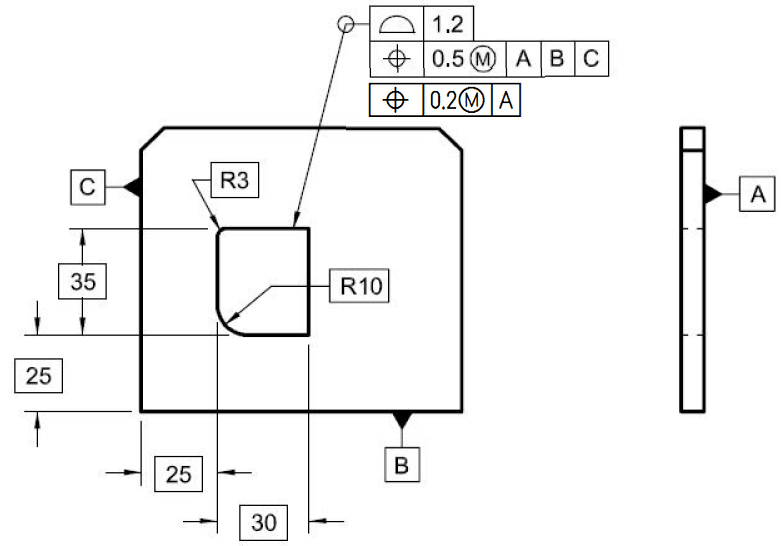greenimi,
I appreciate your second quote very much - that was said much better than I could ever say to express my message.
But please allow me to use your first quote with a little modification - I will replace just one word by a one that is closely related to it and more relevant to this discussion and it's specific context, and let's see what comes out. This is also for the benefit of others that may have misunderstood me:
"..... But that is the price of simplicity directness - the requirements become tighter. With GD&T there is usually a trade-off between tolerance and complexity - to allow more tolerance, the specification (or inspection method) must be more complex."
Does that statement still make sense? No? I don't think so too.
Well, by simplicity I did mean clarity, and directness. Sometimes you can have more direct specifications than others, that supply the same useful flexibility for production, and an advantage of better product definition, even if they don't include the M in a circle symbol or require calculations to determine the total size of the usable tolerance zones.
I'm not against MMC position in general. It is often very useful, direct, efficient and unambiguous - particulary with the axis interpretation. But here we saw a specific example where it may be less preferable.
I have no clue why pointing it out causes such a fierce resistance.


